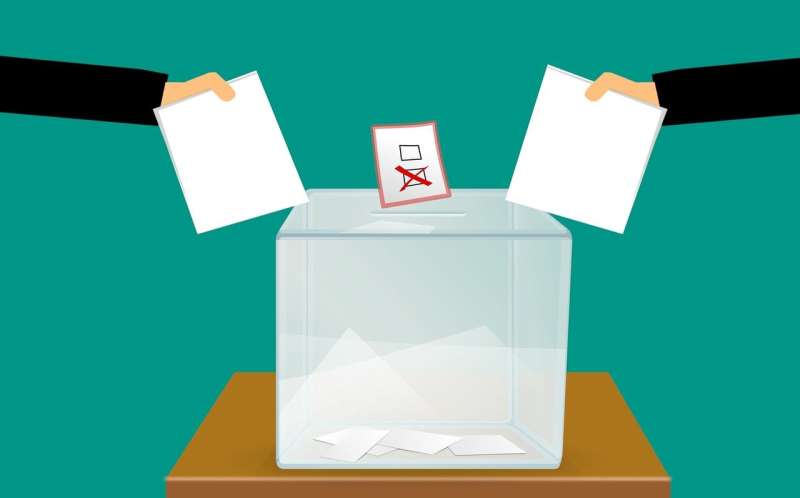This article has been reviewed according to Science X's editorial process and policies. Editors have highlighted the following attributes while ensuring the content's credibility:
fact-checked
peer-reviewed publication
trusted source
proofread
Election administration performance linked to counties' economic, racial makeup

Voters who are neither wealthy nor white are more likely to live in counties with fewer resources available to make sure ballots are counted on time, a new election index revealed.
Researchers have developed the County Election Administration index, detailed in the Election Law Journal, to evaluate election performance by county rather than just by state.
Election administration encompasses the policies and processes that ensure election access, integrity and accuracy. Despite voter fraud claims in the last presidential election, researchers found that overall election performance across the U.S. steadily improved from the 2016 to 2020 elections.
Yet the study did find wide variability in election administration among counties, even within the same state, with lower performance linked to areas with greater numbers of low-income people as well as racial and ethnic minorities.
"Most of the funding for election administration comes from the local tax base, so what we found is that the overall wealth of a county very much impacts the level of election administration that a county is able to afford," said lead author Michael Ritter, a Washington State University political scientist.
Economic inequality often tracks closely with racial and ethnic demographics, Ritter added, and the index showed that areas more densely populated by racial or ethnic minorities were more likely to have lower performing election administrations. This meant that many urban areas ranked lowest on the index.
In a comparison of metropolitan areas during the 2020 election, New York City was the lowest performing followed by San Antonio, Texas and San Diego, California. The top performing was Louisville, Kentucky followed by Milwaukee, Wisconsin. Seattle's King County ranked fifth highest, and Clackamas and Multnomah counties in Portland, Oregon, were among the top twenty.
Ritter, and co-author Caroline Tolbert of University of Iowa, created the new index because the often-used measure, the Election Performance Index, focuses on states while much of the actual election process—from staffing polling sites to purchasing voting machines—takes place at the county-level.
"The United States is unique among advanced democracies in that election administration is very decentralized," said Ritter. "The federal government and states may set general directives about how elections are to be administered, but a lot of those actions are carried forth by county-level governments."
The new index includes 19 measures of election administration such as voter wait times, percentage of rejected provisional ballots and "residual voting" rates, which is the percentage of ballots cast that were ultimately not counted.
Election scholars believe that a higher residual voting rate may indicate something is wrong with the county-level process, such as inadequate training of poll workers, malfunctioning voting machines or issues with ballot design.
Another important measure was whether there are post-election or risk-limiting audit laws in place. These are designed to allow governments to validate that election machines are working properly and votes are being counted correctly. Several states, including Alabama, Maine, Mississippi and South Dakota, do not have these audit laws.
The authors have made the data in the County Election Index available for use by researchers and election officials. A more interactive website is under development which will allow members of the general public to look up their own county's performance. The researchers hope that the data can be used to optimize election administration throughout the U.S.—and that voters can advocate for those changes.
Ritter also sees a need for more equal funding for election administration among counties.
"I would suggest that we need to have an even greater national role in funding election administration, so every county has a similar level of funding based on its population. Then the average county is more likely to have the resources and personnel it needs to effectively implement U.S. elections," he said.
More information: Michael J. Ritter et al, Measuring County Election Administration in the United States, Election Law Journal: Rules, Politics, and Policy (2024). DOI: 10.1089/elj.2023.0027
Journal information: Election Law Journal
Provided by Washington State University


















